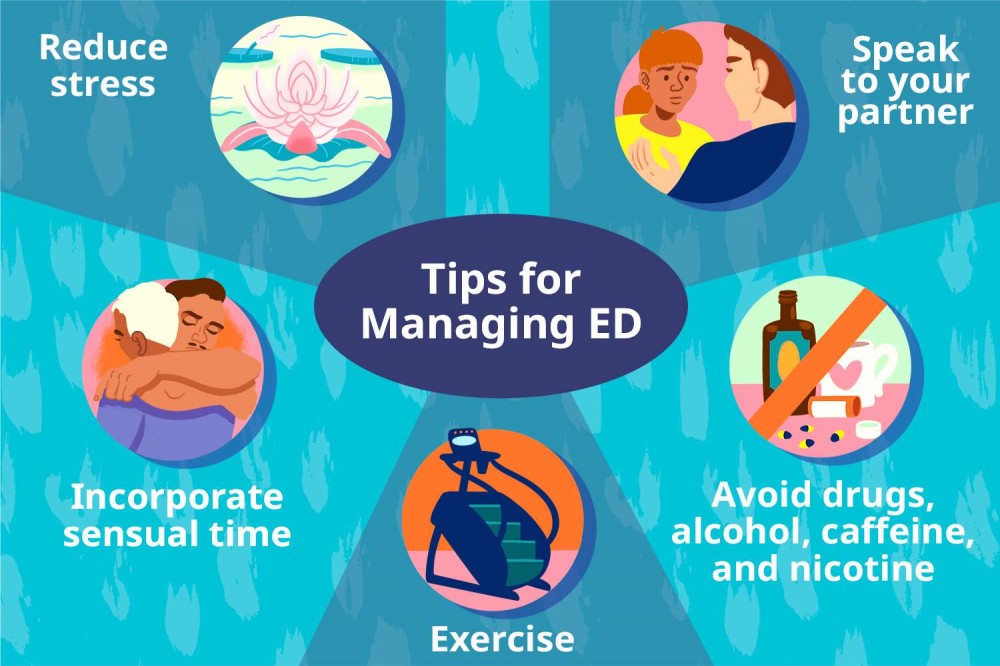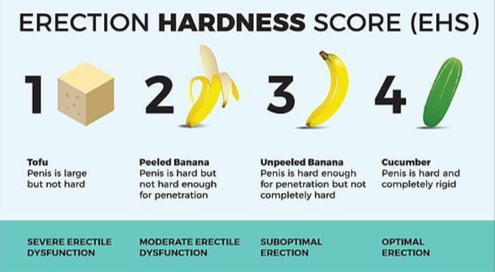
What is Erectile Dysfunction (ED)?
ED/impotence is the inability to achieve and maintain an erection firm enough for intercourse. Multiple regulatory systems are involved in normal erectile function. Thus, disruption of psychological, neurological, hormonal and vascular factors, individually, or in combination can induce ED.
It affects up to 50% of men between ages of 40-70. As of 2019, the reported ED prevalence in Malaysia was 69.5%.
Erection Hardness Score (EHS)

Common Risk Factors
SIgn & Symptoms
Complications
Food to Focus
•High-nitrate vegetables (spinach, lettuce, parsley, beet leaves)
•Oyster & other shellfish
•Protein containing L-arginine
•Dark chocolate
•Tomatoes, watermelons & other lycopene-rich food
•Avocados
Food to Avoid
•Fatty food
•Sugar
•Alcohol
Lifestyle Modifications
•Exercises (swimming, running, cycling)
•Weight loss
•Psychotherapy
•Sleep
•Stress reduction
•Smoking cessation
•Alcohol reduction
References
1. Dean RC, Lue TF. Physiology of penile erection and pathophysiology of erectile dysfunction [Internet]. The Urologic clinics of North America. U.S. National Library of Medicine; 2005 [cited 2022Jan5]. Available from: https://www.ncbi.nlm.nih.gov/pmc/articles/PMC1351051/
2. Edward David Kim MD. Erectile dysfunction [Internet]. Practice Essentials, Background, Anatomy. Medscape; 2021 [cited 2022Jan5]. Available from: https://emedicine.medscape.com/article/444220-overview
3. Erectile dysfunction: Here’s what to eat to prevent Ed or ... [Internet]. [cited 2022Jan5]. Available from: https://www.healthcentral.com/slideshow/foods-help-avoid-erectile-dysfunction
Subscribe for our latest news and be the first to know about our offers.